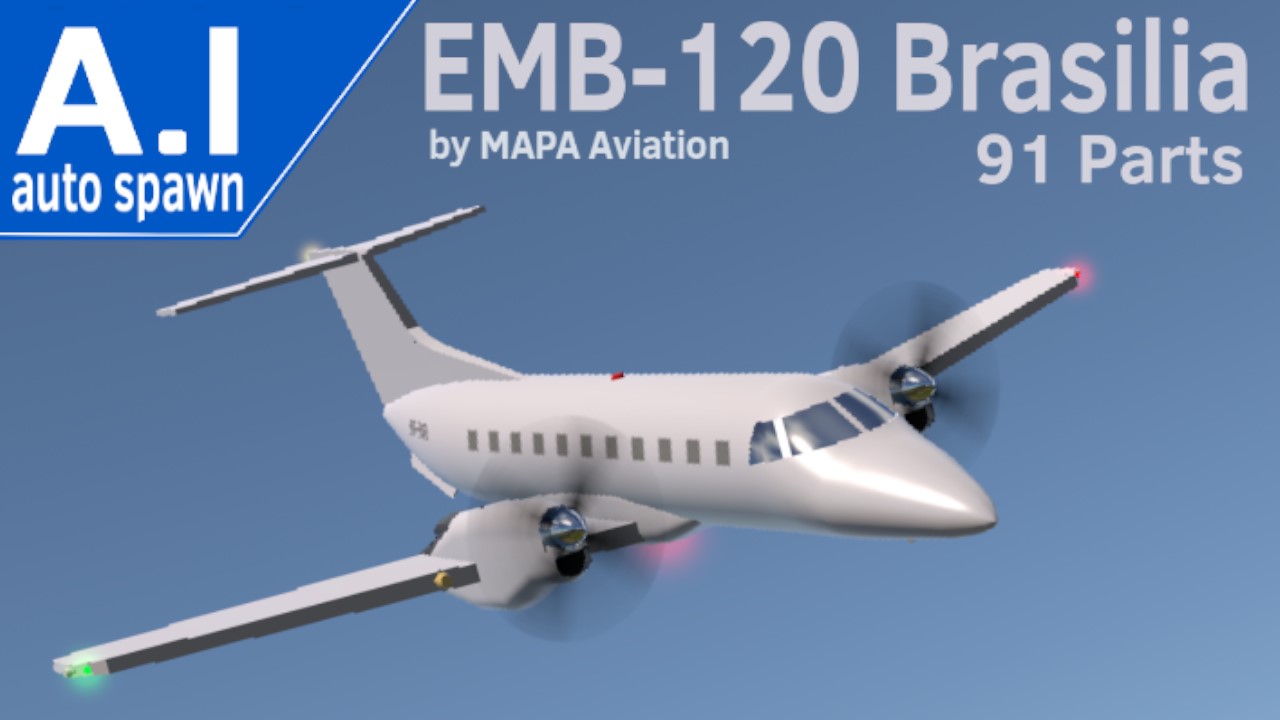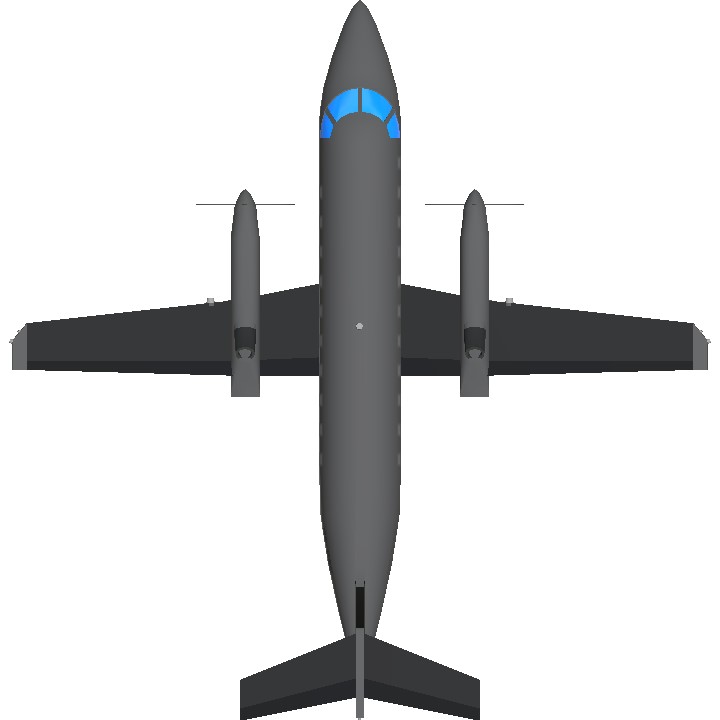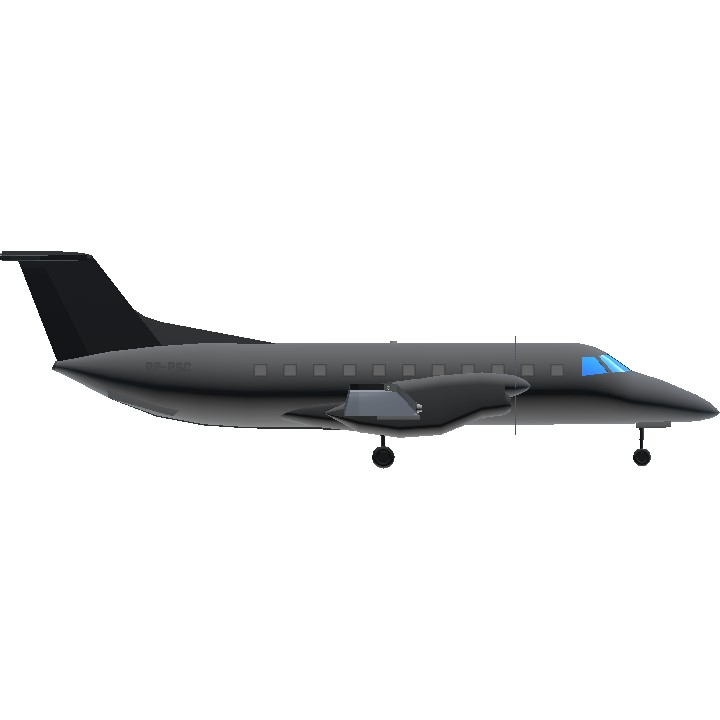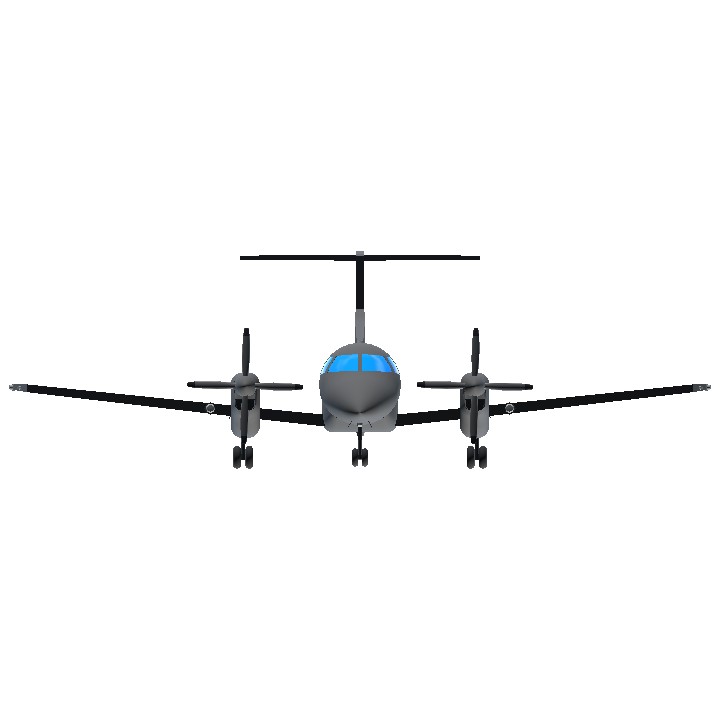<<<Jump to Comments>>>
About the Aircraft: by Wikipedia

Credits: A330-900neo Azul and B787-8F Atlas Air by @XProAerospaceAircrafts
The Embraer EMB 120 Brasilia is a twin-turboprop 30-passenger commuter airliner designed and manufactured by the Brazilian aircraft manufacturer Embraer.
The EMB 120 began development during 1974. While initially conceived as a modular series of aircraft, the Family 12X and referred to as the Araguaia, intending to achieve a high level of commonality with the EMB 121 Xingu, the aircraft was redesigned and relaunched with the Brasilia name scheme during 1979. The redesign, which drew on operator feedback, reduced the seating capacity somewhat while removing commonality with the EMB 121. Its size, speed, and ceiling enabled faster and more direct services to be flown in comparison to similar aircraft. The EMB 120 features a circular cross-section fuselage, low-mounted straight wings and has a T-tail.
On 27 July 1983, the prototype performed its maiden flight. During October 1985, the first EMB 120 entered service with Atlantic Southeast Airlines; it quickly entered service with numerous regional airlines, particularly those in the lucrative US market. While the majority of sales were made to civilian operators, a few military customers were also garnered for the type; a specialised VIP transport version, the VC-97, was operated by the Brazilian Air Force. Numerous models were developed to fulfil differing roles and requirements; these included the flexible EMB120 Convertible and the extended range EMB120ER. During 2001, production of the EMB 120 was terminated; it was the last turboprop-powered airliner to be produced by Embraer.
Following on from the success of the EMB 110 Bandeirante, Embraer commenced work on developing their first transport category airliner in 1974. At one point, this cumulated in the Family 12X, which comprised three models with modular design concept: EMB 120 Araguaia, EMB 123 Tapajós and EMB 121 Xingu. The original concept for the EMB 120 would have been a relatively straightforward stretch of the EMB 121, facilitating a high degree of commonality between the two types. However, the EMB 121 would be the sole 12X model that was actually produced in its original form; the EMB 120 would be redesigned during 1979, disposing of the Araguaia name at the same time.
At the official launching of the project, held in 1979, the name Brasilia was first applied to the EMB 120. Reportedly, the concept had been heavily revised on the basis of suggestions that had been gathered from prospective operators attending Commuter Airline Association of America (CAAA) convention, and the renaming was to reflect the level of alteration to the EMB 120. Being a completely new aircraft, it was no longer related to the 12X family, and had effectively no parts in common with the EMB 121 Xingu. Furthermore, the capacity was revised downwards from 30 to 24 seats. It had originally been designed to be powered by a pair of Pratt & Whitney Canada PW115 turboprop engine, which was capable of 1,500 shp, the aircraft was subsequently redesigned to make use of more powerful PW118 engines, which produced up to 1,892 shp.
In terms of its basic configuration, the EMB 120 features a circular cross-section fuselage, low-mounted straight wings and has a T-tail. The fuselage is of semi-monocoque design, its skin being composed of an aluminium alloy. The wing structure comprises a single three-spar design that is linked to the frames of the lower side of the fuselage, while the nose cone, dorsal fin and leading edges of the wing and tailplane primarily comprise a Kevlar-reinforced glass fibre. The EMB 120 is equipped with retractable tricycle landing gear, which is actuated hydraulically. It is fitted with Goodrich-supplied wheels, oleo-pneumatic shock absorbers, a Hydro Aire anti-skid system, and either carbon or steel brakes.
Into flight
On 27 July 1983, the PW115-powered EMB 120 prototype performed its maiden flight. The type was able to rapidly attract interest from numerous regional airlines, particularly those based in the United States. Its size, speed, and ceiling enable faster and more direct services to be flown around the US and Europe in comparison to similar aircraft. During October 1985, the first aircraft entered service with Atlantic Southeast Airlines.
Numerous models would be developed to suit different operational circumstances; the EMB120RT featured a reduced take off weight, while the EMB120 cargo freighter had an elevated payload capacity of 4,000 kg; the EMB120 Combi and EMB120 Convertible emphasised flexible operations.
During 1993, the first deliveries of the EMB120ER, an extended range model, took place; it was thereafter adopted as the standard production model. Furthermore, hot-and-high versions of these models were commonly equipped with PW118A engines that retain their power ratings at a higher altitude.
The EMB120ER Advanced incorporates a range of external and interior improvements in comparison to most other models. The EMB 120RT could be upgraded to the EMB 120 ER; older aircraft were retrofitted to this standard via a Service Bulletin.
During 2001, production of the EMB 120 was terminated. As of 2021, Embraer has not manufactured a turboprop-powered successor, although company executives have occasionally hinted at there being interest in doing so at some point



Actual Sample:

Image Credit: AirplanePictures

ImagesCredit: Jetphotos.net
This aircraft follows all the basic AI requirements. It is specially designed for Artificial Intelligence [AI] to simulate air traffic, it is able to land and take off with extreme precision at the main airports in the game, it is also a playable aircraft, you can enjoy air collisions, target shooting or just enjoy of a more realistic air traffic.
How to make it operational:
Step 1: Download and save this aircraft to your collection
Step 2: Activate in-game AI air traffic in sandbox mode and wait patiently on the ground until the aircraft is spawned
If the aircraft is not spawning, remove decorative details such as lights, letters and numbers on the fuselage, then repeat the process again until the aircraft is spawned in your skies.
Controls: Standard
Thank you for your attention, Good flight!

Released for Painting
Specifications
Spotlights
- Zaineman 2.1 years ago
General Characteristics
- Successors 23 airplane(s) +541 bonus
- Created On Android
- Wingspan 98.5ft (30.0m)
- Length 101.1ft (30.8m)
- Height 30.6ft (9.3m)
- Empty Weight N/A
- Loaded Weight 34,037lbs (15,439kg)
Performance
- Horse Power/Weight Ratio 0.117
- Wing Loading 27.2lbs/ft2 (132.9kg/m2)
- Wing Area 1,250.7ft2 (116.2m2)
- Drag Points 8613
Parts
- Number of Parts 91
- Control Surfaces 9
- Performance Cost 556





The ERJ-135, ERJ-140, ERJ-145, Legacy 600 and Legacy 650 family are ready and in the final testing phases, It is a slow and time-consuming process but they are adapting well with AI. In a few days they will be ready to be published. Thank you for your attention! :D
esse embraer emb 120 brasilia me lembra o acidente emb 120 capital taxi em 1998
Oh no there is ice the wings....
Great work
Ficou top man
@MAPA finally an AI friendly ERJ-145
@TupolevTU144Charger ?
Beautiful!!!👍
@ChamDel78 nawwww 💀
@ChamDel78 You are welcome ^_^
Thx for the upvote spree😊
@MAPA it’s ok
@ChamDel78 Sorry if I was a little aggressive, I live in a cave and that's why I have trouble understanding jokes
I mean like learn to take a joke a bit
@MAPA got it thanks for replying!
@MAPA Ik I’m joking 😐
@MAPA glad to do it. You're getting to the point where fewer and fewer people can Spotlight your stuff. Z 😺
The AirplanePictures actual sample looks like a Saab 340 or Fairchild Lmao 😂💀
@Zaineman Thanks for highlighting my friend!
@JuliarrombaBR I'm not a simp but u are (fr)
@TupolevTU144Charger yup
@sharkpuppet808 I'm really thinking about reworking my Beechctafts (King Air) before I start building Commercial Aircraft
@JuliarrombaBR yae miko enjoyer
@MAPA Obrigada ❤️, foi até que bem rápido
@JuliarrombaB Parabéns pelo bronze amiga! \(^o^)/